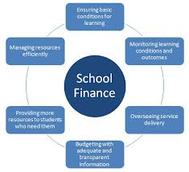
Many schools breathed a sign of relief in June 2009 thinking that they had dodged the financial bullet. However, it was the 2009-2010 school year when the real fiscal mess hit the fan. That fall, there was a trifecta of factors that created immediate instability in a number of independent schools. To begin with, older established institutions (and this was equally true of universities) saw their endowments plummet in value as share prices tanked. What had been considered a stable and seemingly hard income revenue stream vanished overnight leaving schools facing the choice of either belatedly raising tuition or dipping into capital.
Secondly, those schools that had been used to supplementing tuition with annual campaign revenue saw a sharp decline in giving as even those families not directly affected by the downturn used surplus cash to either pay down debt, or reinvest or save as a hedge against further possible decline.
Finally, many schools discovered to their shock that a large percentage of their parents had been paying fees on lines of credit based on the equity of their houses. As house values collapsed, so did that equity and the lines of credit quickly dried up. In some schools as many as twenty-percent of their students disappeared over night.
There were other collateral results, such as families who put off independent school or delayed sending children off to boarding for a year until they saw how things played out. Grandparents who had been traditional donors changed to paying the tuition fees for their grandchildren instead, and large capital projects had to be refinanced or postponed mid-stream as expected donation revenue dried up.
Now, it would be unfair to expect Boards to have exhibited the clairvoyance that escaped the rest of us, but a little pre-crash prudence would have gone a long way. As it turned out, relatively new and "poor" schools tended to do better during this period. Used to balancing their budgets, and keeping a tight rein on expenditures, they experienced less impact than their more free-spending neighbours. Ironically, the oldest and "wealthiest" schools suffered the greatest culture shock. Having been used to dipping into reserves to fund new programmes, resources and additional staffing, they now found themselves quite unprepared for the new realities.
So, as a Board charged with ensuring the long-term sustainability of a school, what should you do? There are three key safeguards that need to be in place to help you to exercise your fiduciary responsibilities:
1. Ensure that your key deliverables (salaries/benefits; student/office resources; tech support; on-going financial responsibilities - loan payments, heat and hydro, professional services; etc.) are all covered by guaranteed "hard income" such as tuition or government grants;
2. Have the Finance Committee, in consultation with the Head and Leadership Team, develop "fall-back" strategies to respond to unexpected enrolment fluctuations. This would include having alternative class and timetable structures that would allow a quick reduction in staffing; creating a list of projects that could immediately be put on hold for a year; or identifying emergency short-term options to shore up resources such as a pre-approved line of credit or assets that could be easily unloaded; and,
3. Do not plan to spend donation monies in the year in which they are given. Allocate all donations as deferred revenue for the next school year. That way you will know precisely how much (or how little) soft income you have going into the school year rather than spending it first and then crossing your fingers that you will collect it later.
A few simple strategies that will save you great headaches down the road!



 RSS Feed
RSS Feed